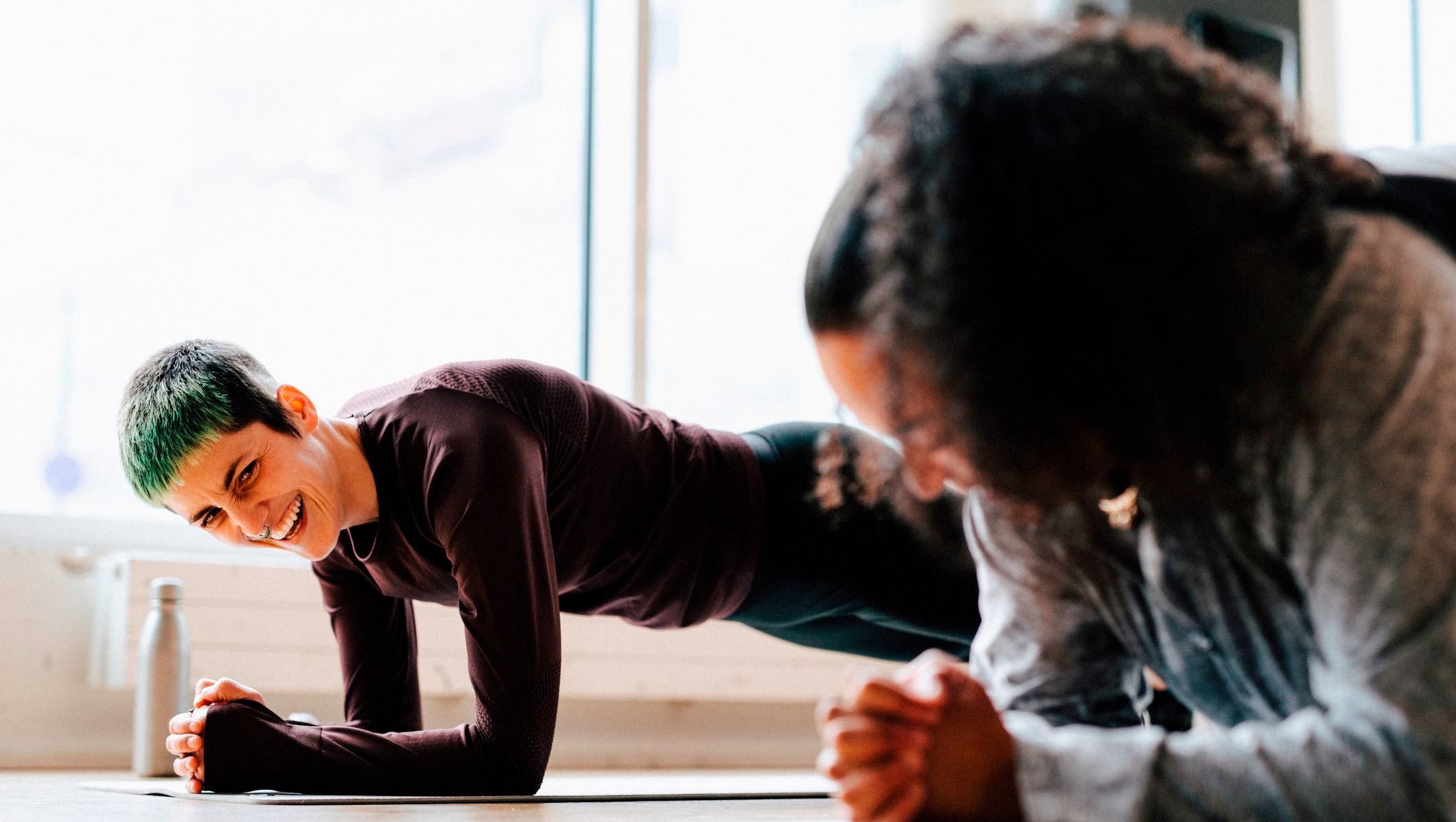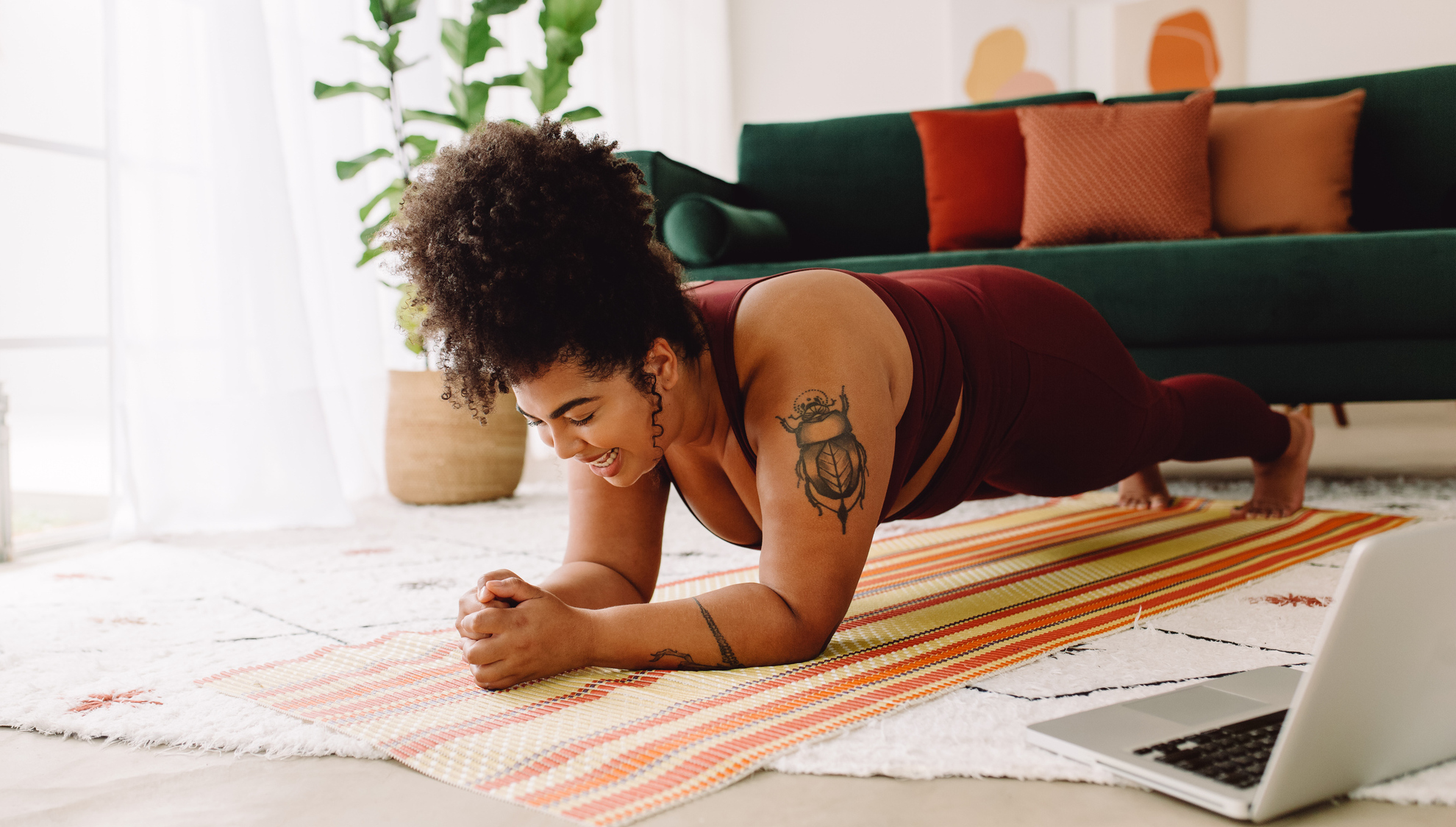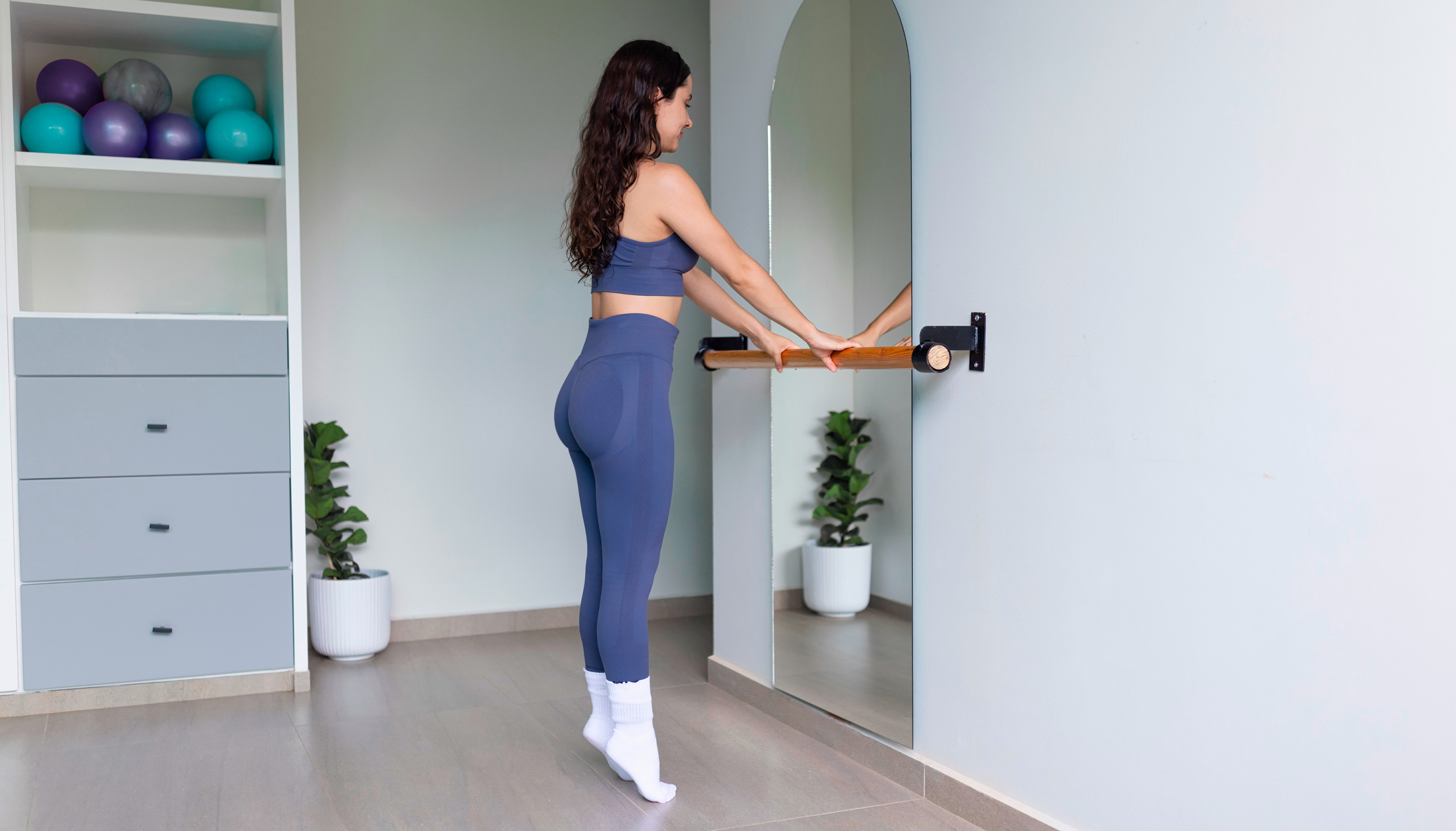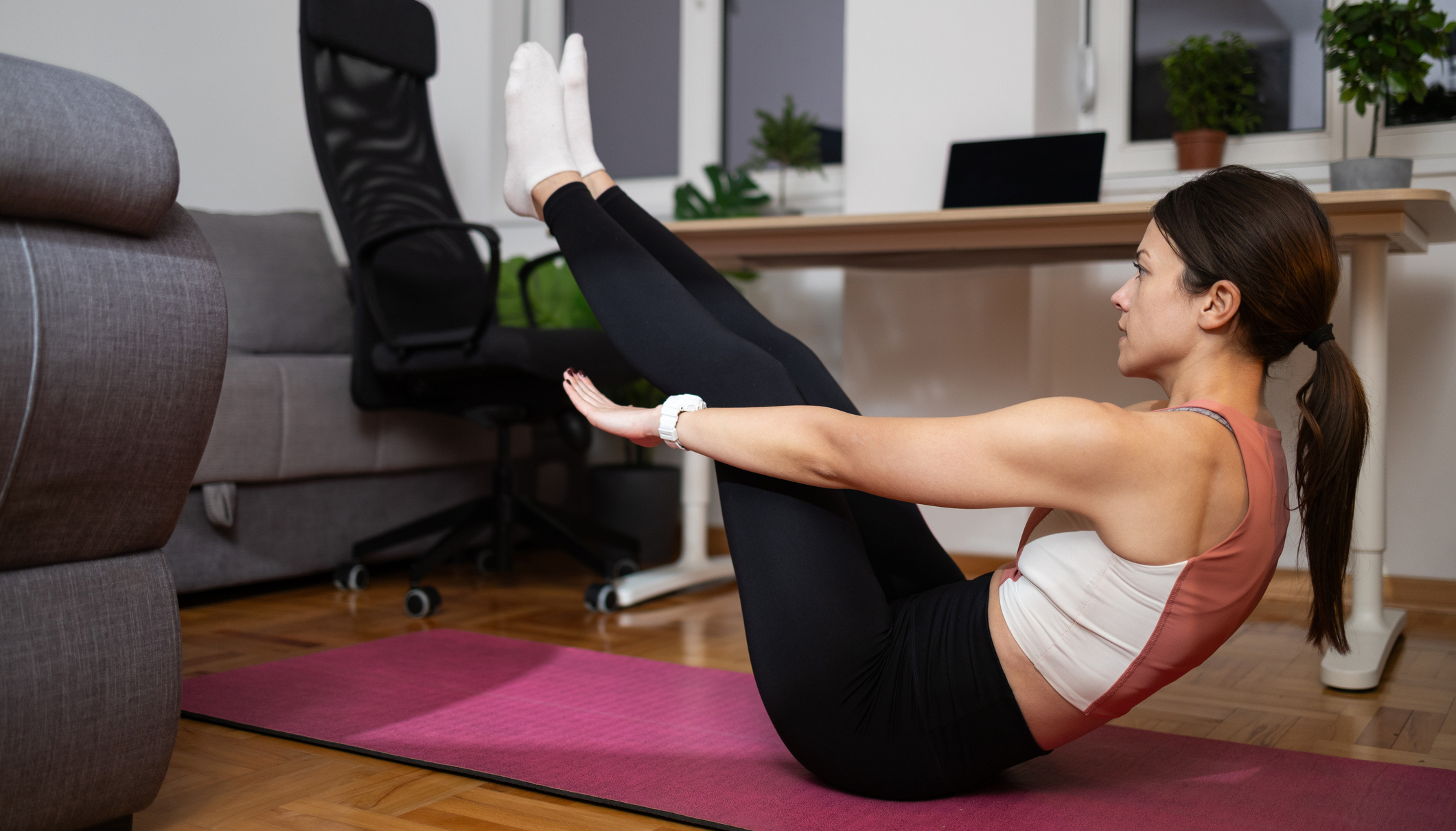This is the best low-impact way for beginners to build strength—and you don't need any equipment to do it
Use these four isometric exercises from a PT to help you get stronger without moving

You may not have come across the term isometric training, but if you've ever done a plank, then you've done an isometric exercise. "Isometric training involves the static contraction of a muscle, without any sort of movement of your joints—you're holding your muscles still against some form of resistance," says personal trainer Rowan Clift.
Isometric holds can be a useful tool to challenge your muscles in a new way. Improvement is easily measured because you can hold the position for longer. And because there’s no movement, there’s no impact, and much less chance of injury.
Studies like this one published in the Journal of Strength and Conditioning Research found that isometric training provides similar benefits to explosive plyometric training— increasing strength and power output—but with reduced impact forces and therefore less potential for injury. And this review found that isometric training led to "substantial improvements in muscular hypertrophy and maximal force production," regardless of training intensity.
That sounds like some great benefits for basically holding still. Though no one who's ever tried an isometric hold would say it's an easy option.
"Isometric training is a good way of helping build strength,” says Clift. "It's great for rehab and gym novices. It can be used by more advanced gym-goers and athletes as well. Some people add them in a superset between exercises as a pre-exhaust, a small exercise to just get those muscles working before you do your main event. I also like it for deloading on a less intense workout day."
Four isometric exercises for beginners
For each exercise, beginners should aim for a 20-second hold, and build up to 30-60 seconds of each hold. Do three sets of each hold.
1. Wall sit

- Lean your back against a wall.
- Slide your back down the wall and take small steps away from the wall until your knees bent at 90°.
- Adjust your feet so your knees are over your ankles.
- Hold this position, keeping your back flat against the wall and your heels on the floor.
Benefits
Start your week with achievable workout ideas, health tips and wellbeing advice in your inbox.
The wall sit will build strength in your quads, glutes and calves. And those legs will burn like crazy.
2. Plank

- Lie on your front, propping yourself up on your forearms and the balls of your feet. Your elbows should be directly below your shoulders.
- Engage your core and hold your body in a straight line from shoulders to ankles, with your hips down and back flat.
Benefits
The plank builds core strength, but it works many other muscles in your body, including glutes, back, shoulders, arms and legs.
If you're aiming to hold the plank for as long as you can, make sure you're engaging your core fully (squeezing your glutes may help) and that your form stays on point throughout—don’t drop or raise your hips, even when the shake sets in.
3. Calf raise hold

- Stand on a flat surface with your feet shoulder-width apart.
- Engage your core and lift your heels off the floor, rolling onto the balls of your feet and hold.
- Progress to a single-leg calf raise or hold dumbbells to increase the load.
Benefits
This targets your calf muscles, and it can be a useful exercise for runners, improving power and speed, as well as strengthening the muscles around the ankles.
4. V-hold

- Lie on your back, engage your core and raise your legs and torso off the mat
- Balance on your sit bones, making a V-shape with your body.
- Extend your arms parallel to the floor, or point them towards your feet if you can, keeping your back flat.
- Try not to use momentum or swing your arms to get into position, and don’t let your shoulders round forward.
Benefits
Unlike most core exercises, the V-hold engages both your upper and lower abs, and because it requires balance, it recruits your deep stabilizer muscles.
Personal trainer Rowan Clift trains individuals and leads classes at The Gym Group in West Hampstead. He also works with Freeletics, an AI-led fitness app that offers personalized fitness programs.
Camilla Artault is a fitness writer with a passion for running and yoga. She interviews experts and writes about a wide range of topics for Fit&Well encompassing health, fitness and nutrition.